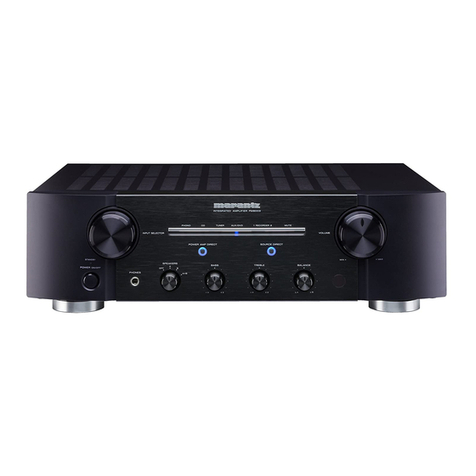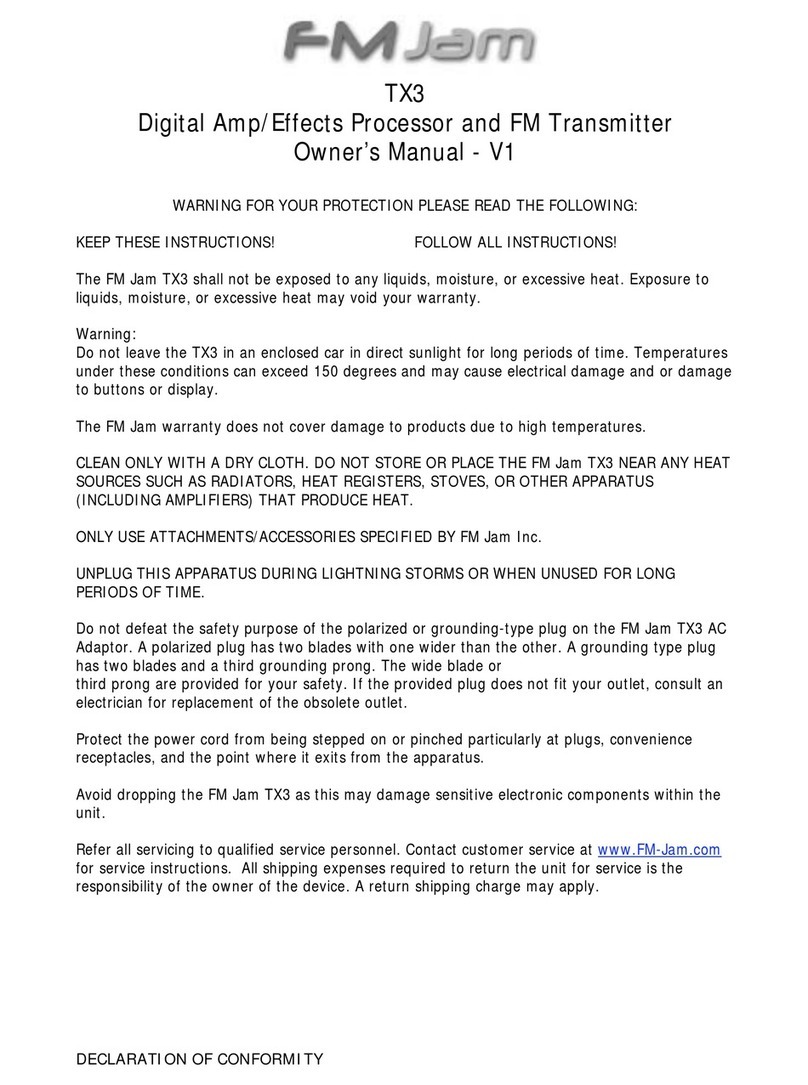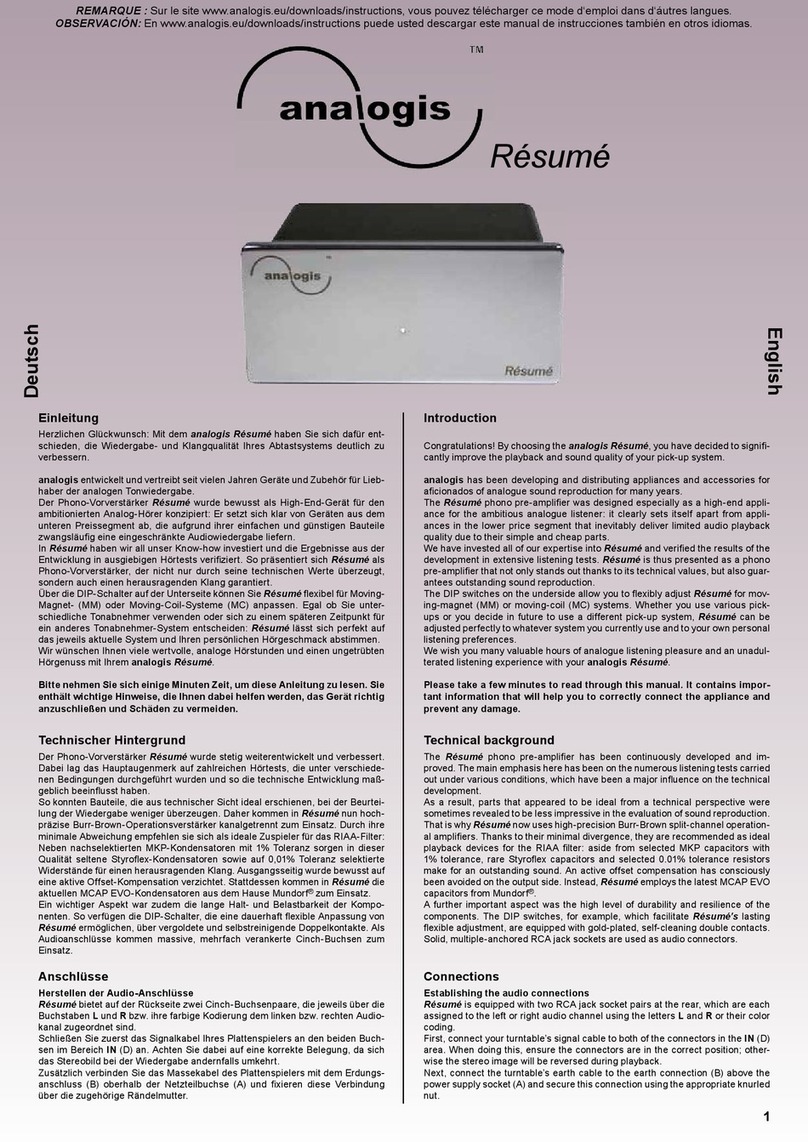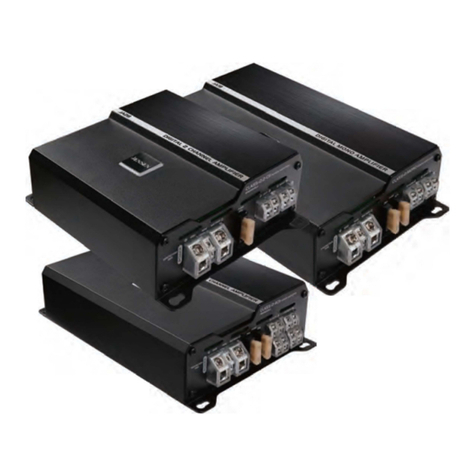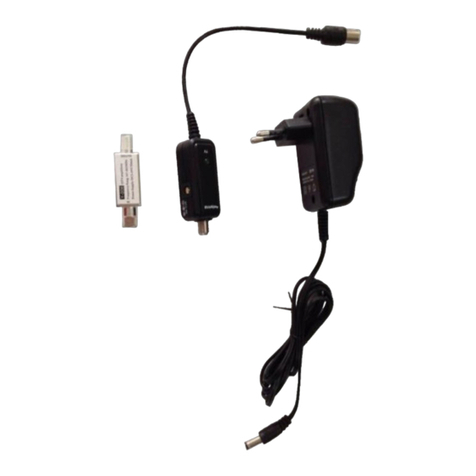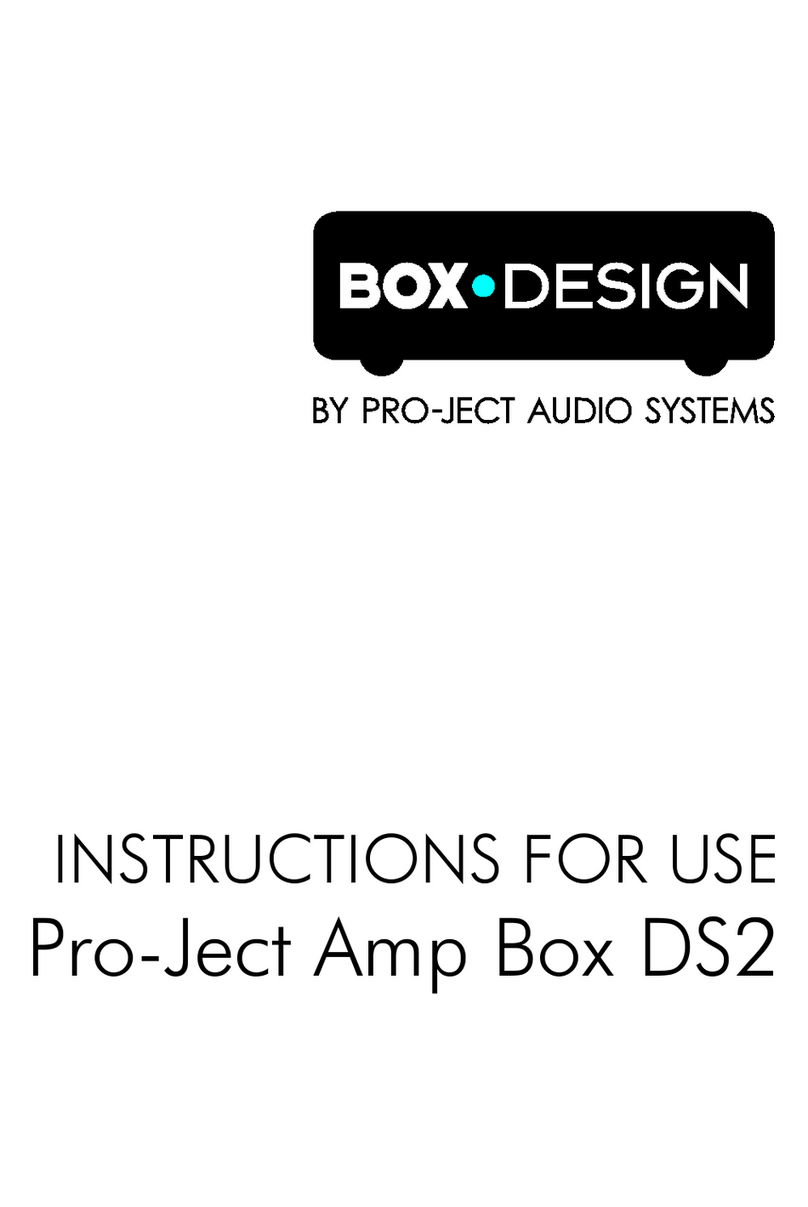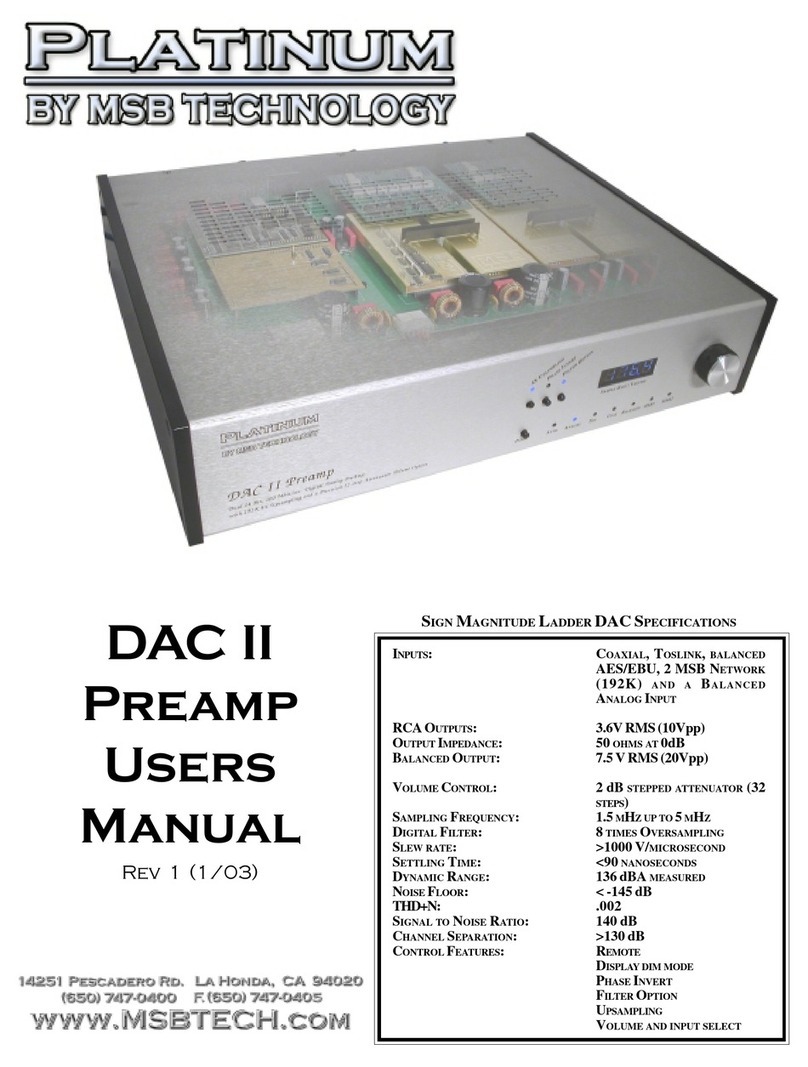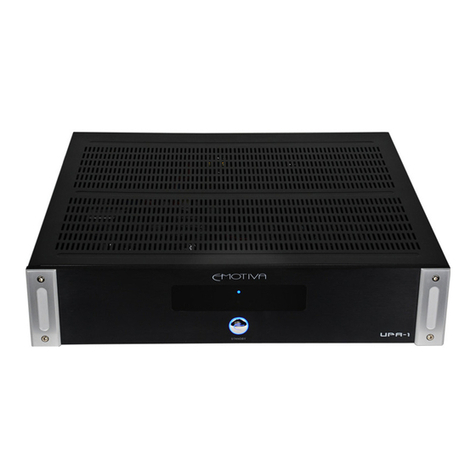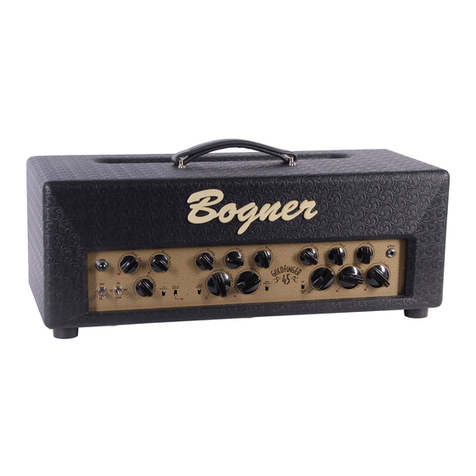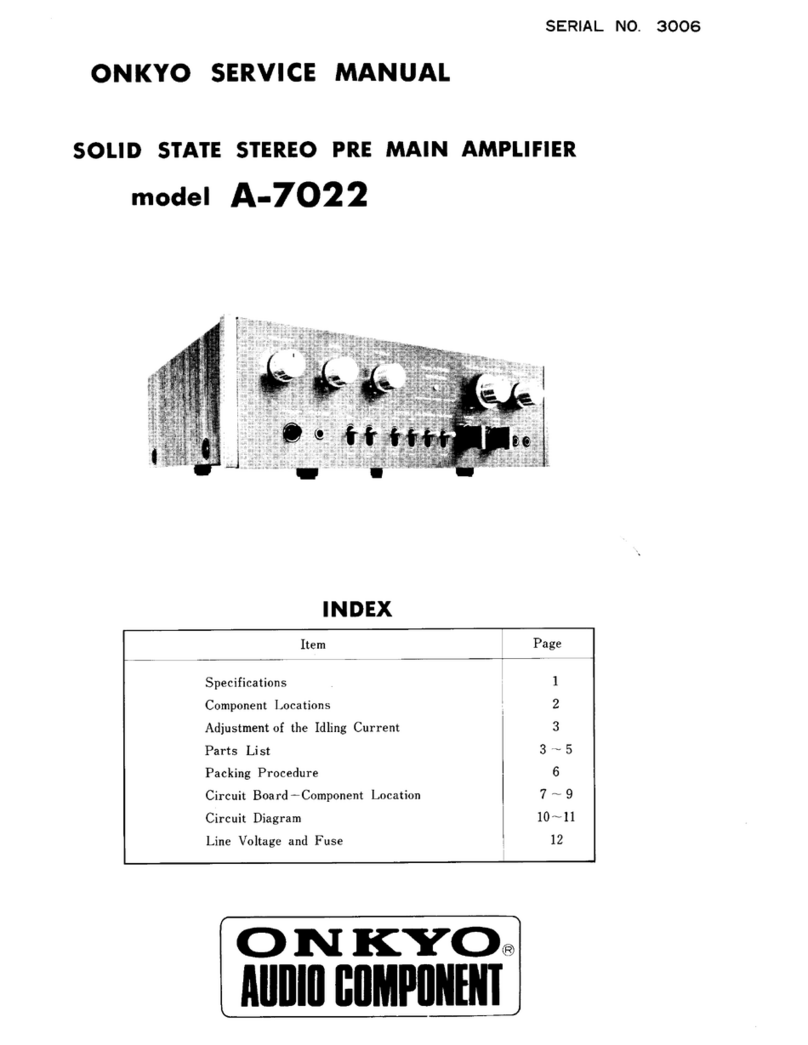Kation Scientific ExAmp-20K User manual

ExAmp-20KS Extracellular Spike Amplifier
User guide
The ExAmp-20K is an AC-coupled spike amplifier
designed for low-noise extracellular recording from
single- or multiple units. Its unique headstage probe
design puts the first stage of amplification at the
microelectrode interface, resulting in less external
interference noise pickup. The built-in filters are
optimized for solid-conductor microelectrodes such
as carbon fiber, tungsten or stainless steel. The
included 60 Hz (or 50 Hz, selectable) reject filter and
our special electrode holder adapters virtually elimi-
nate the need for Faraday cages. Front and rear panel
controls are intentionally simplified for ease of use
without compromising the quality of recordings.
The positive input of the front amplifier (center pin
of the headstage’s SMA receptacle) is referenced to
the ground (ground socket) providing high-quality,
single-ended (monopolar) recordings. The ExAmp-
20K can be used for research and teaching purposes
only that do not involve human subjects.
Main unit specifications
Input impedance: 1013 Ω
Input bias current: 2 pA
System gain: 200x to 20,000x in 7 calibrated steps
System noise: > 2.5 µV peak to peak with probe input grounded
Bandpass filter: 300 Hz to 8000 Hz, built-in Butterworth 4-pole
Notch filter: 50/60 Hz, selectable inside the box
Output voltage swing: ±10 V, maximum
Power source: External, 12 VDC power supply
Power consumption: 200 mA, maximum
Amplifier (Gnd) ground: Isolated from DC input ground (Case)
Dimensions: 155 x 54 x 175 mm aluminum box
Weight: 1.35 lb (614 grams)
Front panel view
Power: Turns the unit on or off. Red LED signals
on status
Probe: Inputs the plug of headstage probe
Gain: Selects the magnitude of amplification
from 200x to 20,000x in 7-positions
Offset: Offsets the output signal by +/- 1V, max.
Polarity: Changes the polarity of output
Output: BNC jack out-putting amplified signal
Front panel controls
General description
Rear panel view
Color of parts may vary
Kation Scientific, LLC, P.O. Box 14674, Minneapolis, MN 55414 Phone/Fax: (651) 698-5167.
E-mail: info@kationscientific.com Web site: www.kationscientific.com
Headstage probe
Signal amplification: 10x, single-ended, AC-coupled
Mounting rod diameter x length: 1/4" (6.35 mm) x 4" (105 mm)
Body diameter x length: 0.75" (19 mm) square x 2.05" (52 mm)
Material: Nickel-plated brass
Cable length: 52" (132 cm)
Input receptacle: SMA, spark plug type, gold-plated
Input & ground sockets mate with: 0.0315"-0.0370" (0.80-0.95 mm) diameter
male pins
Power In: Two identical DC power jacks for
12 VDC input and output,
2.1 mm x 5 mm type
Gnd: Circuit ground, galvanically isolated
from ‘Power In’ ground (Case),
2.64 mm banana jack
Case: Ground (0V) of 12 VDC power input
2.64 mm banana jack
Back panel objects
This exceptional headstage probe is an electrode
holder in one. Using appropriate holder adapters, all
Kation-made microelectrodes or third-party standard
metal electrodes can directly be plugged into the
probe. There is no need for additional electrode hold-
ers. See next page for details.
Also, the coaxial arrangement of the mounting rod
and the SMA-type electrode input receptacle allows
an easy yet precise positioning of the recording elec-
trode. The robust, nickel-plated body of the probe
provides and unsurpassed protection from electro-
magnetic interference.
Mounting rod Cable
Electrode input
Ground
SMA receptacle

Carbostar-4LT
Recording/iontophoresis
microelectrode
Adapter
No. 2331
Ground
socket
In order to minimize external noise pickup and interference, experimental set-ups have to be correctly shielded and grounded. Overall
shielding is often provided by a Faraday cage. Faraday cages do not necessarily remove interference from magnetic fields which
usually cause the most problems. Here we provide a few tips to improve quality of recordings.
Tip 1. Place the the preparation to be recorded as close to a large carbon steel (not stainless steel!) baseplate as possible (which should
be connected to the ground pin of the headstage probe). The greater the mass of the plate, the more helpful it will be at deflecting a
magnetic field. A steel slab 1/2" (12 mm) thick and at least 20" (500 mm) on each side greatly improves the quality of extracellular
recordings.
Tip 2. Always keep the lead wire from the electrode to the headstage probe as short as possible, less then 2" (5 cm). This is
accomplished by our unique headstage probe design so that microelectrodes can actually be plugged straight into the probe.
Tip 3. Keep line-powered equipments as far away from the site of recording as it is possible. Everything near the preparation should
be grounded to a single point, that is the ground pin on the headstage probe and to nothing else. Use of a "star formation” grounding
will minimize ground loops.
Tip 4. Isolation of extracellular amplifiers from power line ground prevents ground loop formation.
Certification:
Kation Scientific certifies that this instrument has been tested and inspected thoroughly and was found to meet all published
specifications before shipment from the factory.
Warranty:
This product is warranted against defects in materials and workmanship for one full year from the date of shipment as long as it has
been exposed to normal and proper use. Products which prove to be defective during the warranty period will be repaired or replaced
without charge provided they are returned to the factory. Kation Scientific will provide for servicing and calibration after the warranty
period for a reasonable service charge. The instrument should be shipped to the factory postage prepaid.
Performing an experiment
Electrode holder adapters
Adapter No. 2331 is used for attaching Kation-made single- or multibarreled carbon fiber electrodes to
the headstage. In order to configure this type of electrode holder, screw the adapter onto the headstage
and simply plug the electrode's connector pin in as shown above. Adapter No. 2332 is used to
accomodate long, small-diameter metal (tungsten or stainless steel) electrodes. To configure this type
of electrode holder, first insert the electrode pin-first into the front of the adapter and pull it through so
that it protrudes somewhat from the back end of the adapter. Use a small tweezers to grasp the pin of
the electrode and insert it into the input socket of the probe. Screw the adapter onto the probe gently by
hand. Finally, use an inch-long strip of metal or electrical tape to fix the electrode as shown in the right
figure.
For other type of electrode holder adapters check our website.
Grounding
Circuits of the headstage probe and main amplifier are galvanically isolated from the input DC power
(floating configuration). In many cases, however, a better recording quality may be achieved by
connecting the amplifier’s ground (Gnd) to the input DC ground (Case). This solution may be
counterproductive in other instances.
The headstage probe has two miniature sockets for grounding: one on the front end (shown above) and
one on the rear end. Use one of them to ground the amplifier to your preparation. All other instruments
should also be connected to this point to achieve a “star formation” grounding.
After following these basic rules, the removal of interference noise is normally a process of trial and error, involving experiments
with slightly different patterns of grounding. Remember that our ExAmp-20K amplifier permits a very smooth, low-noise recording.
Thus, if your extracellular recording shows a frustrating level of noise keep trying to find and eliminate the source.
See also the ‘Grounding’ section below.
No. 2332
Kation Scientific, LLC, P.O. Box 14674, Minneapolis, MN 55414 Phone/Fax: (651) 698-5167.
E-mail: info@kationscientific.com Web site: www.kationscientific.com
This manual suits for next models
1
Table of contents
